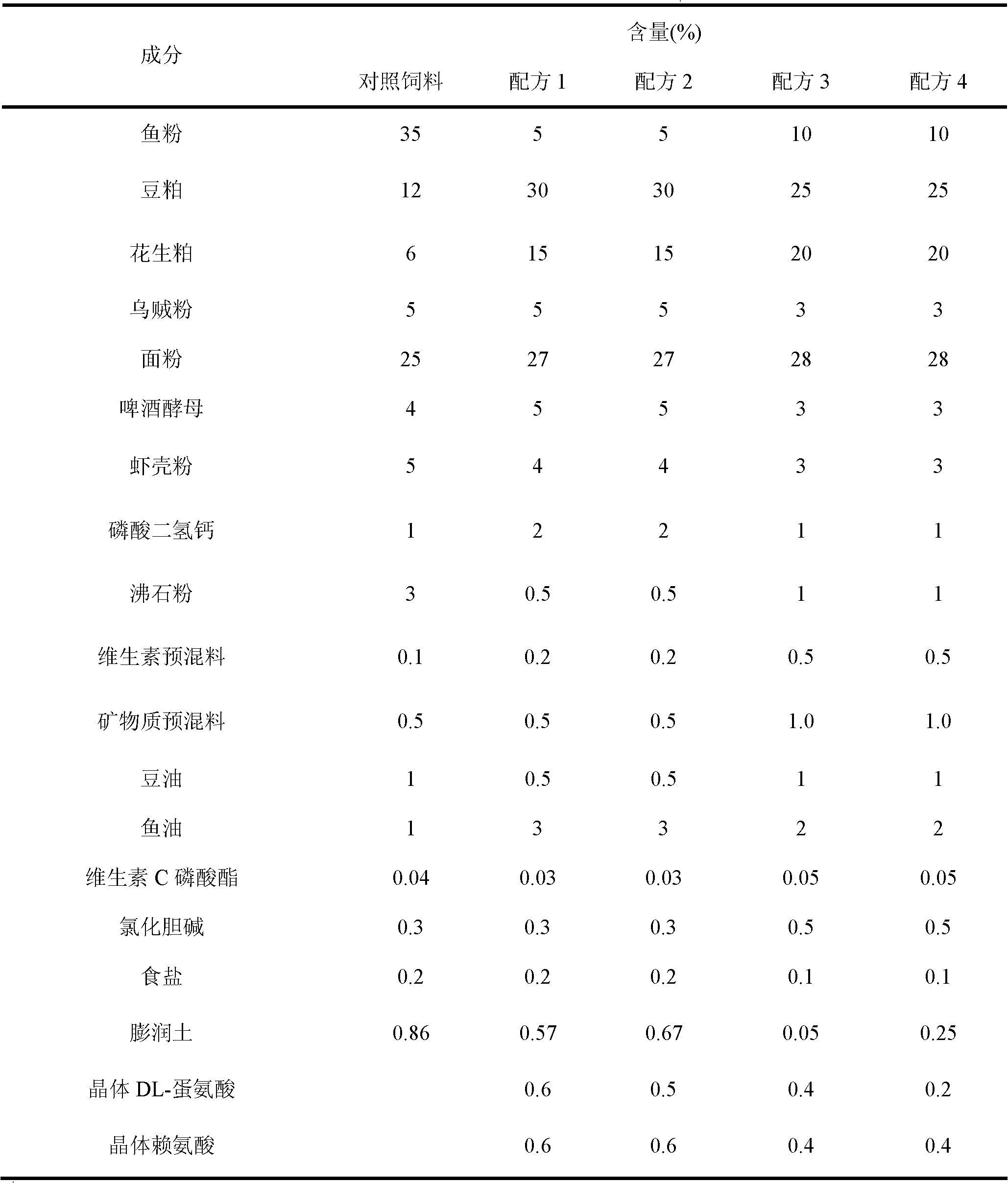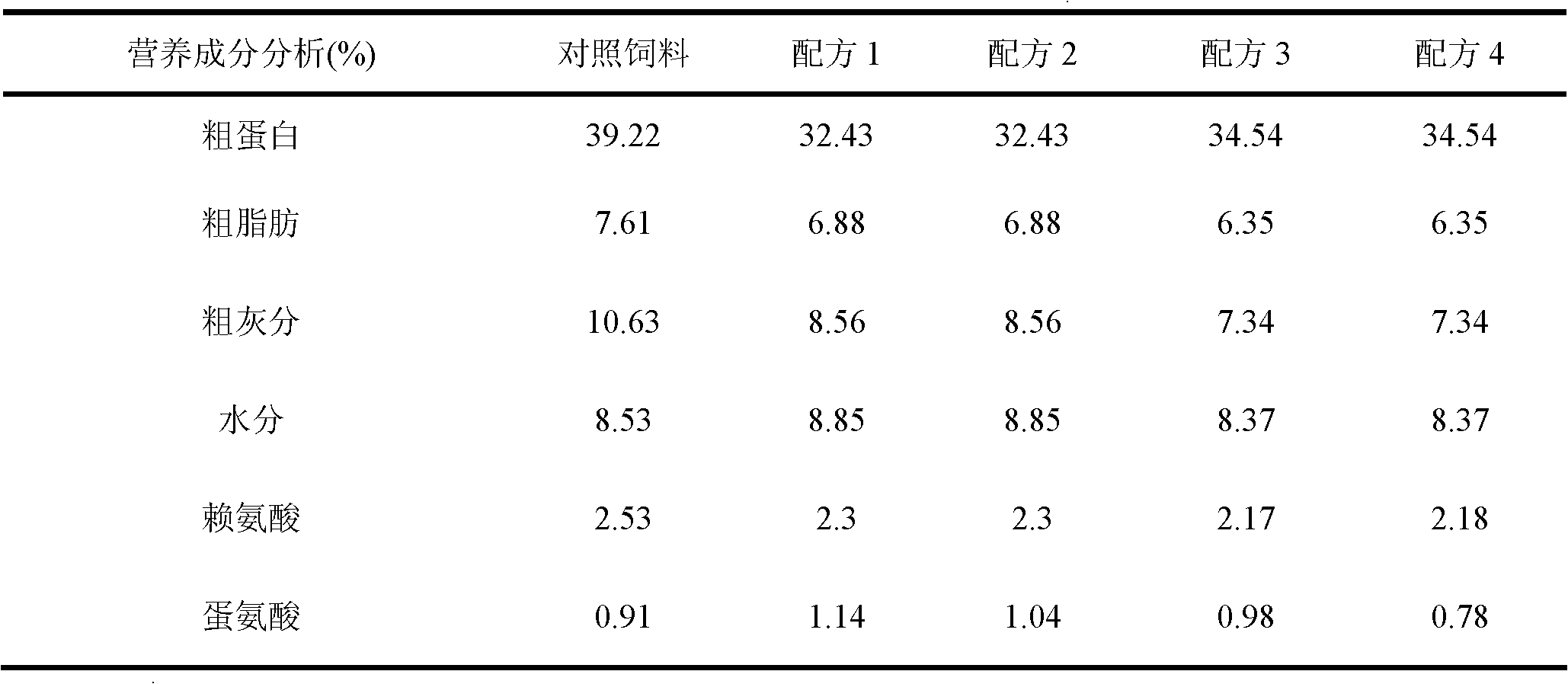Low-protein low-fish meal feed for Litopenaeus vannamei
A low-protein, low-fishmeal technology, applied in animal feed, animal feed, climate change adaptation, etc., can solve the problems of amino acid imbalance, restricting the application of aquatic feed, anti-nutritional factors, etc., to achieve stable sources and facilitate large-scale promotion and application , the effect of simple production process
- Summary
- Abstract
- Description
- Claims
- Application Information
AI Technical Summary
Problems solved by technology
Method used
Image
Examples
Embodiment 1
[0022] Each raw material was crushed and passed through a 60-mesh sieve, and each raw material was weighed according to formula 1 shown in Table 1. Fish meal, soybean meal, peanut meal, squid meal, shrimp shell powder, brewer's yeast and flour were mixed evenly, and then methionine, lysine Acid, vitamin C phosphate, choline chloride, calcium dihydrogen phosphate, salt, vitamin premix, mineral premix, zeolite powder, bentonite were added in portions for mixing, and then soybean oil and fish oil were added to the mixed In the mixture, stir and mix evenly to obtain the low-protein and low-fishmeal feed for Litopenaeus vannamei of this embodiment, and its nutrient composition analysis is shown in Table 2. With this feed raising 0.45g Litopenaeus vannamei for 56 days, the feed conversion efficiency was 78.32%, the specific growth rate was 3.67, the weight gain rate was 679%, the protein efficiency was 2.45, and the survival rate was 83.89%. There was no significant difference in th...
Embodiment 2
[0024] Formula 2 shown in Table 1 was prepared according to the method of Example 1 to obtain the low-protein and low-fishmeal feed for Litopenaeus vannamei in this example, and its nutritional composition analysis is shown in Table 2. With this feed raising 0.87g Litopenaeus vannamei for 56 days, the feed conversion efficiency was 76.07%, the specific growth rate was 3.59, the weight gain rate was 646%, the protein efficiency was 2.38, and the survival rate was 86.67%. There was no significant difference in the parameters of Litopenaeus vannamei raised by the same method.
Embodiment 3
[0026] Formula 3 shown in Table 1 was prepared according to the method of Example 1 to obtain the low-protein and low-fishmeal feed for Litopenaeus vannamei in this example, and its nutritional composition analysis is shown in Table 2. With this feed raising 0.33g Litopenaeus vannamei for 56 days, the feed conversion efficiency was 82.52%, the specific growth rate was 3.75, the weight gain rate was 715%, the protein efficiency was 2.58, and the survival rate was 85.57%. There was no significant difference in the parameters of Litopenaeus vannamei raised by the same method.
PUM
 Login to View More
Login to View More Abstract
Description
Claims
Application Information
 Login to View More
Login to View More - R&D
- Intellectual Property
- Life Sciences
- Materials
- Tech Scout
- Unparalleled Data Quality
- Higher Quality Content
- 60% Fewer Hallucinations
Browse by: Latest US Patents, China's latest patents, Technical Efficacy Thesaurus, Application Domain, Technology Topic, Popular Technical Reports.
© 2025 PatSnap. All rights reserved.Legal|Privacy policy|Modern Slavery Act Transparency Statement|Sitemap|About US| Contact US: help@patsnap.com


